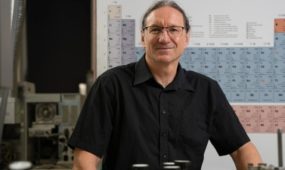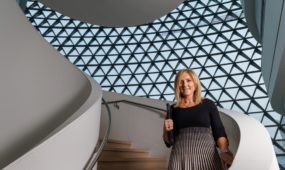Reviving an indigenous language dormant for 150 years
Education
A WEEK dedicated to reviving a language that has not been fluently spoken in 150 years will help highlight the need to save native languages in Australia.

Sign up to receive notifications about new stories in this category.
Thank you for subscribing to story notifications.
Celebrations of the dormant Kaurna language began this week in South Australia to highlight the progress linguists and educators have made in bringing the language back into everyday use.
Kaurna man Jack Buckskin grew up without an understanding of his culture or a feeling of belonging, but led the celebrations with traditional song and dance.
Since discovering his heritage as a young adult, Buckskin began a mission to revive the language and culture of Kaurna people by working alongside the University of Adelaide Kaurna Warra Pintyanthi group.
Together they have developed lessons, dictionaries, books, YouTube episodes and shows.
“I didn't know anything about my Kaurna heritage until I started teaching the language and I'd been teaching it for a couple of years,” Buckskin said. “I had grown up as a Narrunga man and it wasn't until I went on my own journey and learnt more about my own history that I realised my heritage.”
When we're talking about the Aboriginal culture, we're talking about the cultural heritage of every Australian.
The traditional land of the Kaurna people is the Adelaide Plains in South Australia, however since communities were broken up during European settlement the language stopped being spoken fluently in the 1860s.
Kaurna educator Stephen Goldsmith believes the language revival of Kaurna is a huge step towards developing an honest identity for Australian in the future.
“When we're talking about the Aboriginal culture, we're talking about the cultural heritage of every Australian,” he said. “When people go into communities they start to understand the depth and the knowledge of Aboriginal people and how we operate as part of the environment.”
In 1990 University of Adelaide linguist Dr Rob Amery developed the first sentence in the Kaurna language in living memory.
Since, Dr Amery as part of the language revival group Kaurna Warra Pintyanthi has been working on building up from the limited 3500 word vocabulary first documented by Lutheran missionaries.
He said a lot of work has gone into everyday language use between man and woman and parent and child.
“If people start speaking to their babies or young children in Kaurna language, it's the safest possible place to begin to use the language because they're going to smile and respond and be really positive,” Dr Amery said.
Jack Buckskin practices Kaurna every day with his young daughter, who has shown a strong understanding the language and has begun communicating simple words with her newly born brother.
Continuing on the same path she will grow up to become a part of the first generation in almost 150 years to speak the language fluently.
It is the hope of Kaurna Elders and educators to see that children understand themselves and their place in the world through learning about their traditional language and culture.
“People without knowledge of their history, culture and origins, are like a tree without roots,” Goldsmith explained. “No matter where you are going you have to get a sense of where you're coming from.”
Recently the group published the Kaurna Learners Guide and Kaurna Alphabet Book to help learners understand complicated areas of language learning such as sentence construction, and a full Kaurna to English, English to Kaurna Dictionary is near release.
Jump to next article



